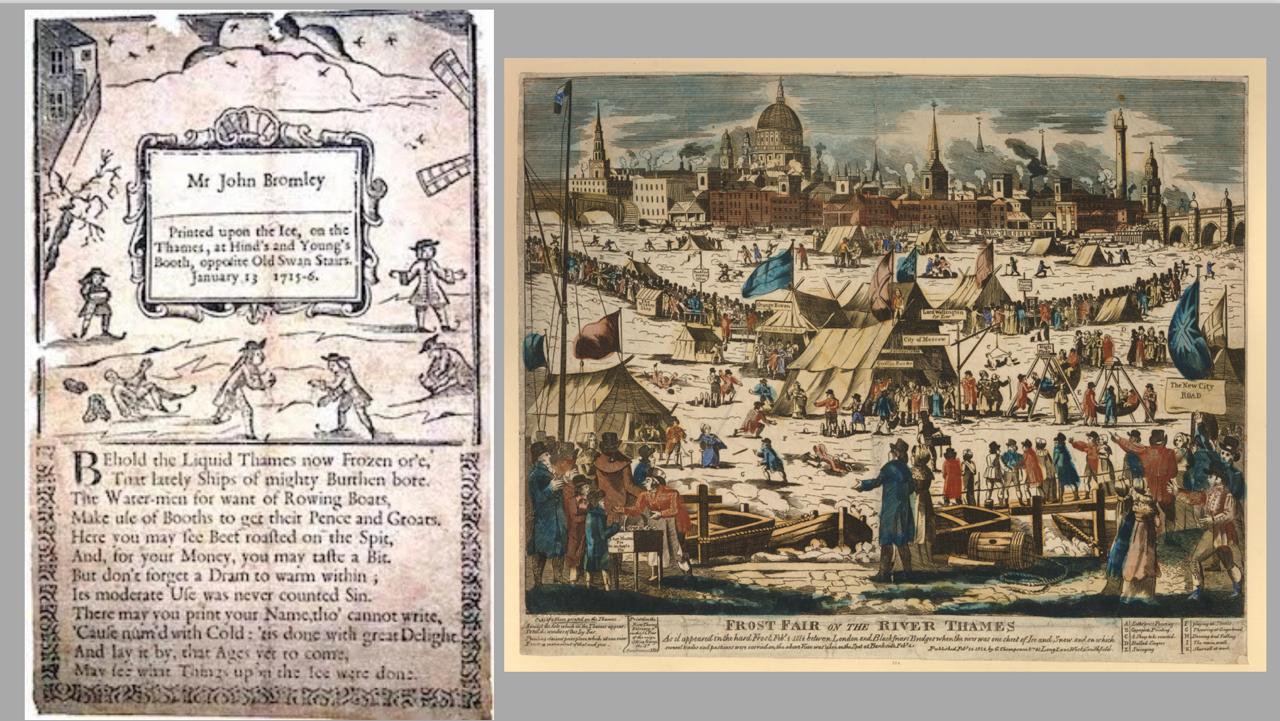ON THIS DAY: 24 November 1715 – A deep freeze began that would grip London for months. The day marked the beginning of a three-month frost fair on the River Thames – one of the most remarkable spectacles of England’s so-called Little Ice Age, a period of bitter winters and unpredictable weather that stretched from the 14th to the 19th centuries.
The frost began around 24 November 1715 and did not relent until 9 February 1716. During this time, the Thames froze so solidly that Londoners could walk, skate, and even build upon it. A lively ‘ice town’ sprang up, with stalls stretching from Temple Stairs to the South Bank. Booths served food and drink, while entertainers performed skittles, bull-baiting, and other amusements. The frozen river became not merely a wonder of nature but a thriving winter carnival.
Even printers took to the ice. They set up makeshift presses, offering visitors the chance to purchase personalised souvenir leaflets to commemorate the extraordinary event. One such visitor, the bookseller and collector John Bagford (1650–1716), described his trip to the Frost Fair on 18 January 1716, where he bought a ‘Thames Souvenir’ printed right on the ice. The slip read:
‘All you that walk upon the THAMES,
Step in this Booth and Print your NAMES;
And lay it by, that Ages yet to come,
May see what things upon the ICE were done.
(Printed upon the Frozen River THAMES, January the 18th, 1715/16.)
Among the many attractions was a ‘cook’s shop’ – an early form of pop-up restaurant – where people could dine on the frozen river. On 19 January 1716, two large oxen were roasted whole on the ice near Hungerford Stairs, drawing enormous crowds. Taverns opened on both sides of the river, serving ale and other refreshments – and, as evening fell, offering less innocent entertainments.
Even royalty joined the festivities: the Prince of Wales (the future George II) and the Duke of Marlborough were both seen strolling among the crowds, enjoying the novelty of London’s frozen fairground.
But amid the revelry, danger lurked. The ice was treacherous in places, and slipping was common. Some unfortunate souls drowned when cracks opened or tides lifted ice structures and boats. One refreshment booth even broke free and floated away downriver, forcing those inside to scramble for safety.
Despite the risks, the Frost Fair of 1715–1716 remains one of the most legendary episodes in London’s history – a time when the River Thames itself became a bustling winter city, glittering with life, laughter, and the resilience of the human spirit against the cold.

